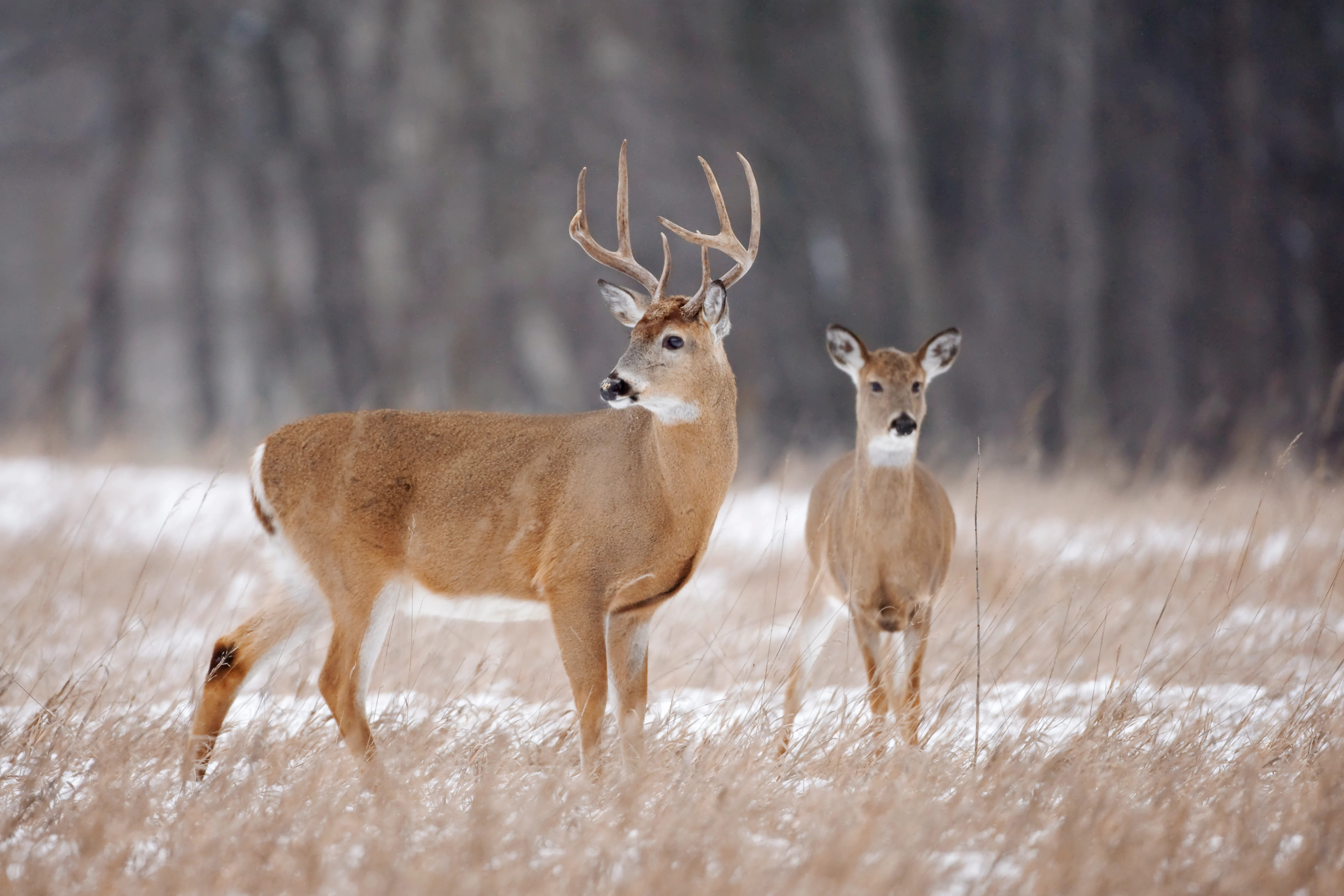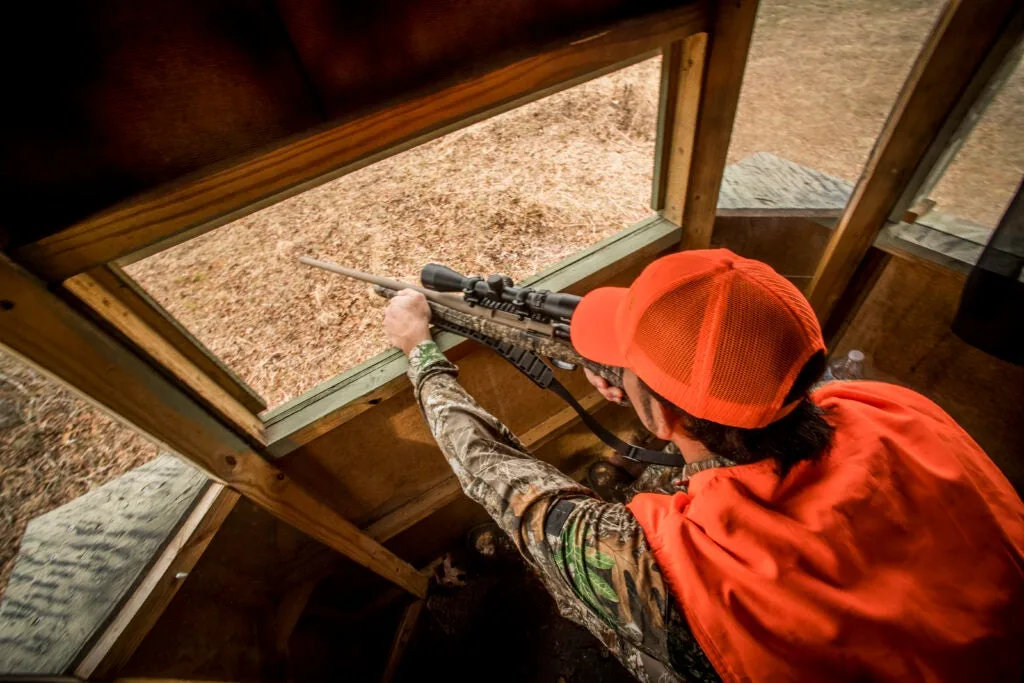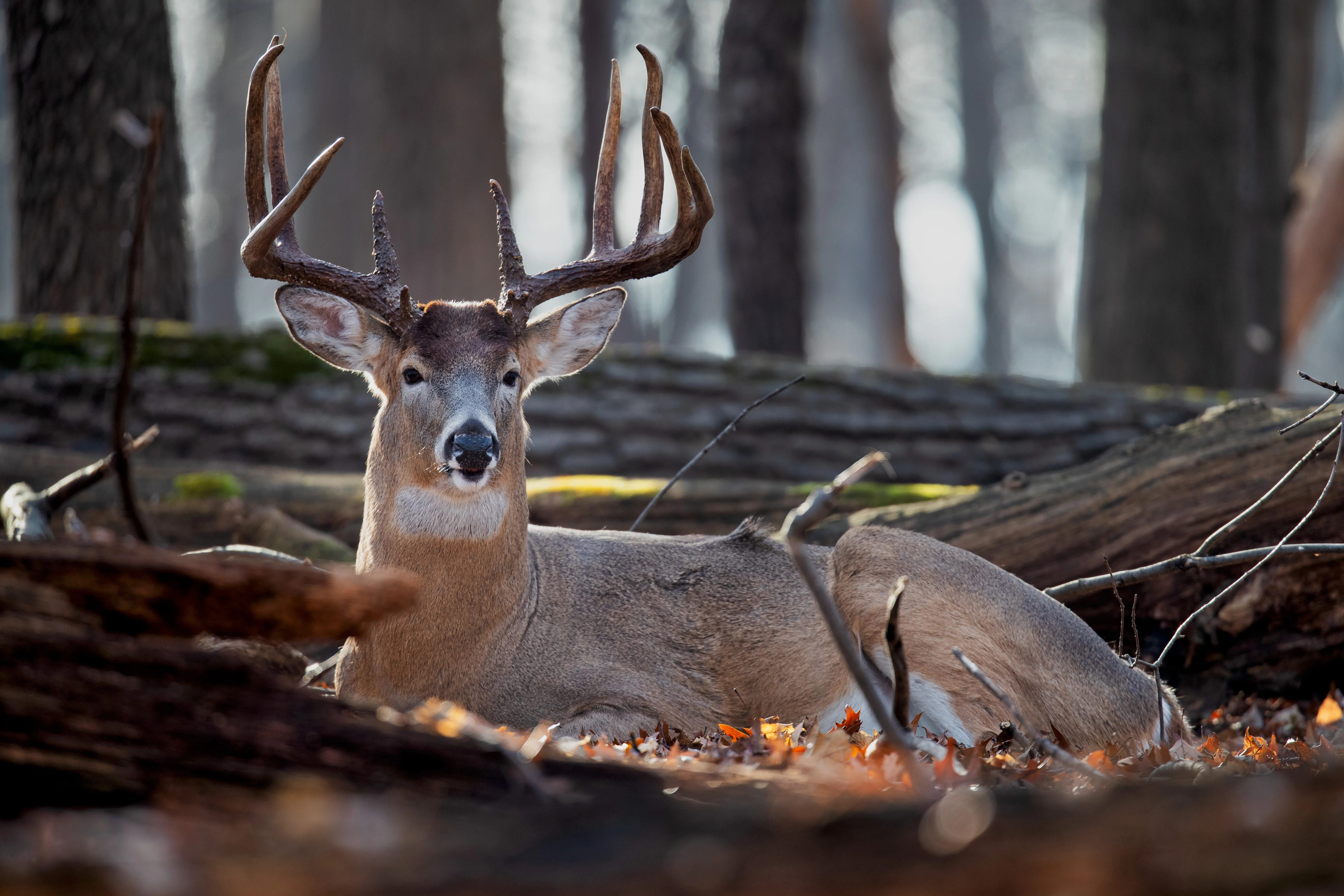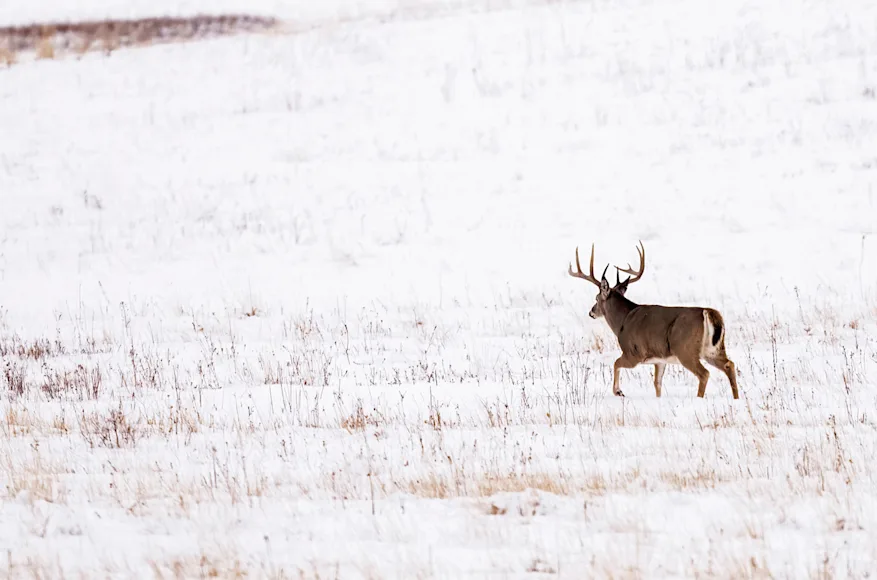Do you know what this Thursday is? Well, sure, it's Thanksgiving. But it's also the next Best Day of the Rut and therefore also the day when you're going to tag a giant whitetail and drag it home for the whole extended family to gawk at. Sound good? Okay, then let's make a plan, or two. But first, a pep talk.
I get it. The hottest action of the rut is over, and most of us have already logged enough time in the timber to be physically tired and mentally exhausted. It'll be very tempting to spend a long lazy day stuffing yourself and watching football. But here's the thing: While most of the whitetail herd is done with the rut, the absolute biggest bucks are not just still at it; they are searching harder than ever to find a dwindling number of late-cycling does. So, whether you hunt with family or by yourself, Thursday will be a great day to intercept one of the big boys. You'll need to work your hunting around the family feast, of course, but we've got that covered below. The main thing is to get yourself in the deer woods.
Rut Phase: Pickup Breeding

Just as there are always a handful of does that come into estrous early and kick-start breeding behavior days ahead of the main event, there are also does that come into heat well after the rut's peak. Those does—and the bucks that pursue them—are what’s driving the action right now. The bad news, of course, is that there aren’t a whole ton of late-cycling does on the landscape, which can make the action hard to cash in on. The good news—and I’d argue that it’s pretty darn good—is that the bucks that focus on that handful of available females typically consist of the the biggest, oldest bucks. I always make a point of hunting the pickup-breeding phase, and I've seen it time and time again where the best deer I have on camera largely disappear during the heart of rut but then reappear just after. Plus, this is a good time to cross paths with a stranger buck cruising well outside his home range to find a doe.
Related: The 7 Best Days of the Whitetail Rut 2024
November 28 Morning Hunt Plan: Sit and Wait or Rattle and Run

Odds are you've got all morning, at least, before the big meal starts, and how you spend it depends on how social you're feeling. If what you want is some peace and quiet before the mayhem starts, then you can't do better than a stand or blind in deer woods with the sun coming up. As noted, mature bucks will be be covering a lot of ground, so your best bet is to sit in a main funnel or travel corridor that connects prime feeding areas and doe bedding areas/security cover. Wooded ridges, creek bottoms, and brushy tree lines are all good options. Get in a place where you can see a good distance, and don't be afraid to call or rattle to any buck you see.
If you’re like me, however, the drive to kill a good buck still burns strong right now, but the urge to grind out more hours in a stand or blind...well, not so much. So, now is a perfect time to keep your boots on the ground and try a tactic my friend and accomplished whitetail and turkey hunter Ron Gehrke calls "rattle-n-run." And if you are feeling a little more social on Thanksgiving, you can grab a brother, sister, cousin, or uncle and make this a two-person tactic.
The strategy is simple, fun, and effective. Hopping between several farms or several areas on one large farm, you want to slip in fairly close to known or suspected bedding areas and try to rattle in a buck. As noted above, the prime players now tend to be mature bucks, and these old timers often still have the attitude and aggression to come to a fight. Usually, however, not directly to a fight. The key thing to keep in mind is that a mature buck—especially one that has survived the hunting pressure up to this point—is almost certainly going to try to circle downwind of your calling. So, if you are by yourself, set up with an obstacle on your downwind side (a fence, cliff, riverbank) if possible and keep a close eye to both sides for a buck trying to skirt around you. If you have a partner, put one person 30 to 50 yards downwind to intercept a circling buck.
Give each setup 30 minutes or so, and if you don't kill a buck in that time, move on to the next spot. The one great advantage of calling from the ground is that you can make all kinds of ruckus that’s impossible from a stand; rake trees, break brush and crunch leaves, all signs of realism for bucks teeing off on each other. It can be very effective, and for anyone who has spent too many hours in a stand, you’ll be amazed how quickly the morning passes.
November 28 Evening Hunt Plan: Stage Sanctuary Mini-Drives

If you're still looking for some peace and quiet after the meal, climb back into the same morning stand, as a good buck could cruise past anytime. On the other hand, if you’re pumped for a family hunt, grab a few relatives and run a mini-drive or two through some sanctuary cover. One or two other hunters is all you need, but you can expand it to a few more in you want.
This isn’t a huge, hoot-n-holler affair, but rather a gentle push designed to get a buck on his feet. If you have a bigger group, place a couple posters at key escape routes. If you have a smaller group, you don't need posters, because the idea here for the drivers to gently bump deer to one another. If the drivers move at still-hunting pace, savvy bucks will get up and run for a short distance, then circle back to escape through the back door. That’s where the other drivers, who are also moving slowly and paying attention, get the shooting.
This is an excellent push to use in dense cover (swamps, marshes, and clearcuts) but can be adapted to most any habitat. The key is to move slowly and with a crosswind, and if you really want to fine-tune things, stagger the start-time of each driver. This creates a non-uniform line that will dupe bucks into thinking they’re only avoiding one guy bumbling through their cover. Wear orange, be sure of your shooting lanes, and generally make safety the number one priority. This is an excellent quit-hit drive you can pull off after a midday meal or repeat at different thick-cover areas all day if you want.
Gear Tip: Rechargeable Handwarmers
If you plan is to sit most of the day, you may need a little help keeping your hands warm. I’m dating myself here, but I recall a time when those shake-n-grip chemical hand warmers burned hot enough that you thought twice before putting them against bare skin. Those days are long gone probably thanks to a lawsuit brought by a customer who blistered his ignorant skin with the things. Now I get so frustrated trying to wring some warmth out of these weak-burning pouches that I rarely buy them.
Of course my hands still get cold, so I was happy to find rechargeable hand warmers like those made by Unigear. While you could buy several boxes of the old handwarmers for the price of one Unigear Hand Warmer, the latter actually keep your hands warm, can be adjusted for different heat levels, and can be used over and over instead of tossed in the waste basket after a single use. I do a ton of late-season, cold-weather hunting, and units like these have been one of those true life-saving gear items that help me hunt longer and more effectively when the temps drop low.



